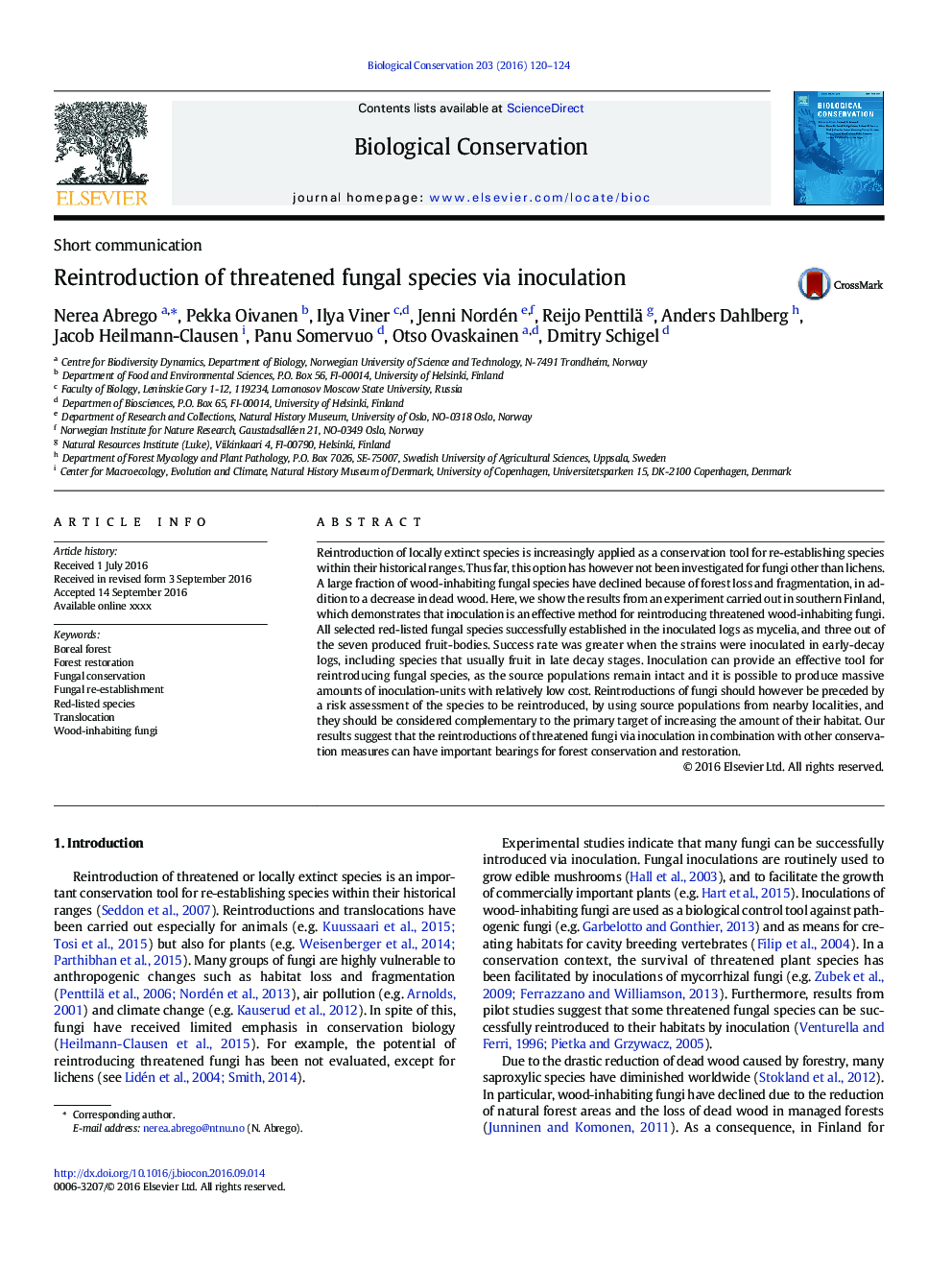| Article ID | Journal | Published Year | Pages | File Type |
|---|---|---|---|---|
| 6298110 | Biological Conservation | 2016 | 5 Pages |
Abstract
Reintroduction of locally extinct species is increasingly applied as a conservation tool for re-establishing species within their historical ranges. Thus far, this option has however not been investigated for fungi other than lichens. A large fraction of wood-inhabiting fungal species have declined because of forest loss and fragmentation, in addition to a decrease in dead wood. Here, we show the results from an experiment carried out in southern Finland, which demonstrates that inoculation is an effective method for reintroducing threatened wood-inhabiting fungi. All selected red-listed fungal species successfully established in the inoculated logs as mycelia, and three out of the seven produced fruit-bodies. Success rate was greater when the strains were inoculated in early-decay logs, including species that usually fruit in late decay stages. Inoculation can provide an effective tool for reintroducing fungal species, as the source populations remain intact and it is possible to produce massive amounts of inoculation-units with relatively low cost. Reintroductions of fungi should however be preceded by a risk assessment of the species to be reintroduced, by using source populations from nearby localities, and they should be considered complementary to the primary target of increasing the amount of their habitat. Our results suggest that the reintroductions of threatened fungi via inoculation in combination with other conservation measures can have important bearings for forest conservation and restoration.
Keywords
Related Topics
Life Sciences
Agricultural and Biological Sciences
Ecology, Evolution, Behavior and Systematics
Authors
Nerea Abrego, Pekka Oivanen, Ilya Viner, Jenni Nordén, Reijo Penttilä, Anders Dahlberg, Jacob Heilmann-Clausen, Panu Somervuo, Otso Ovaskainen, Dmitry Schigel,
